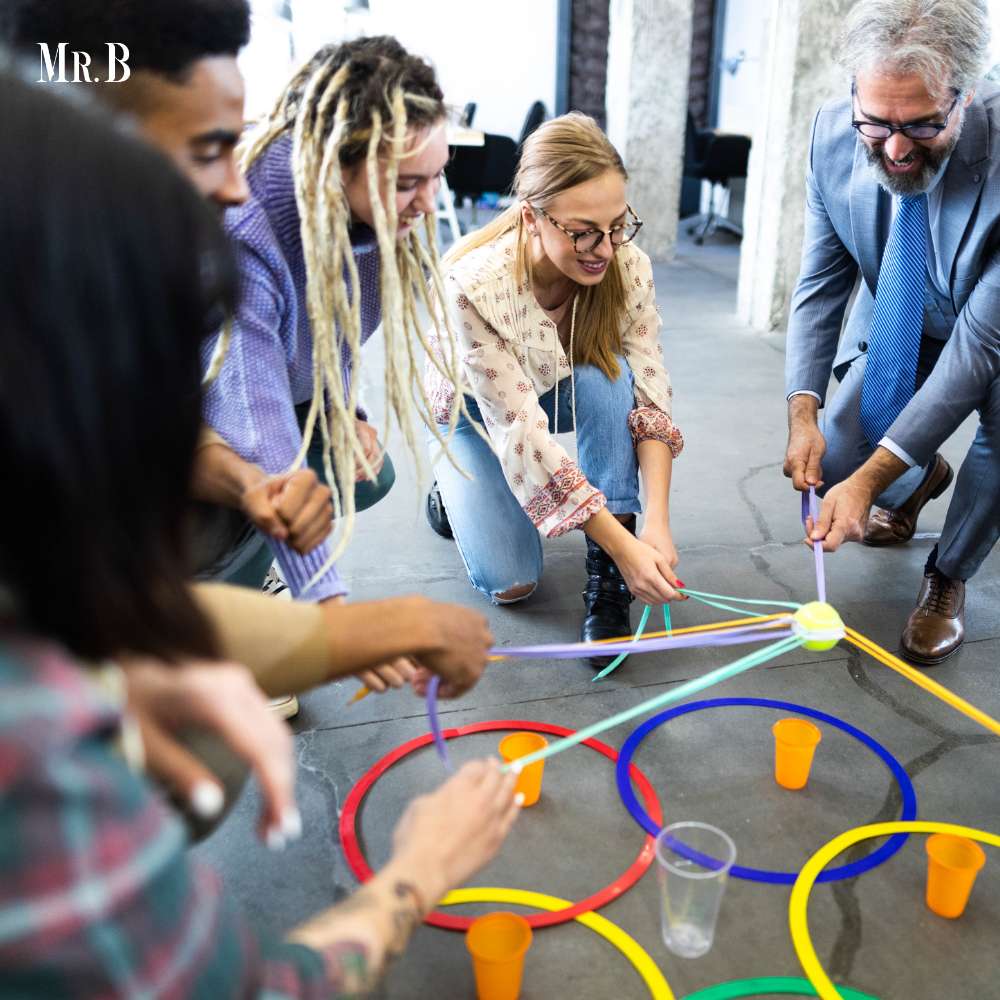The leadership activities in the workplace are always a fun time to bond with other team mates. In the ever-evolving landscape of the modern workplace, the strategic implementation of leadership activities has become a linchpin for organizational success. These carefully crafted activities serve as transformative tools, nurturing and honing the leadership skills of employees at every level. In this exploration of such activities, we delve into 15 effective initiatives that not only elevate individual leadership prowess but also significantly contribute to enhanced efficiency in employee performance.
Here are 15 Effective Leadership Activities in a Workplace
1. Leadership Training Workshops:
Conducting regular leadership training workshops stands as a cornerstone in the arsenal of leadership activities. These sessions, rich in interactive exercises and discussions, immerse employees in the principles and practices of effective leadership. These activities echoes in the minds of participants, reinforcing the experiential learning that these workshops provide.
2. Team-building Retreats:
Beyond the confines of the office, team-building retreats breathe life into leadership activities. Through challenging outdoor activities and collaborative problem-solving, employees not only forge stronger bonds but also discover latent leadership traits within themselves. These activities reverberate in the shared memories of these retreats, leaving an indelible mark on participants.
3. Mentorship Programs:
Establishing mentorship programs within an organization fosters a culture of continuous learning. The activities are embodied in the day-to-day interactions between mentors and mentees, as the former imparts invaluable wisdom, guidance, and leadership insights to the latter.

4. Role-playing Scenarios:
Incorporating role-playing scenarios into leadership activities allows employees to step into different leadership roles. This hands-on experience builds confidence, sharpens decision-making skills, and encourages adaptability—the essence of effective leadership. These activities become synonymous with the dynamic simulations that empower employees to think on their feet.
5. Cross-functional Collaboration Projects:
Encouraging cross-functional collaboration through projects creates a fertile ground for activities. As employees from different departments come together, these activities encapsulates the shared vision, effective communication, and collaborative problem-solving that propel these projects towards success.
6. Leadership Book Clubs:
Reading and discussing leadership literature in a communal setting stimulates intellectual growth. The leadership activities resonates in the insightful conversations and shared perspectives that emerge, contributing to a collective understanding of effective leadership principles.
7. Time Management Challenges:
Time management challenges embedded in leadership activities push employees to prioritize tasks and enhance their organizational skills. These activities underscores the tangible improvement in efficiency as employees learn to optimize their time and resources effectively.
8. Goal-setting Workshops:
Structured goal-setting workshops are integral leadership activities that empower employees to define and pursue their objectives. These activities signifies the alignment of individual and organizational goals, fostering a results-driven mindset that fuels enhanced performance.

9. Stress Management Seminars:
Leadership activities extend beyond the professional realm to address the holistic well-being of employees. Stress management seminars, with the leadership activities at their core, equip individuals with the resilience and emotional intelligence needed to navigate challenges, resulting in increased productivity.
10. Fostering Collaboration:
The evolution of workplace dynamics has led organizations to embrace the culture of team building as a catalyst for success. The leadership activities permeate through collaborative efforts, emphasizing that fostering a culture of teamwork is not just a choice but a strategic imperative.
11. Breaking Silos:
Leadership activities that break down departmental silos create an interconnected workplace ecosystem. These activities signify the dismantling of barriers, fostering open communication and cooperation across different segments of the organization.
12. Encouraging Innovation:
In a collaborative environment fuelled by these activities, innovation flourishes. Leadership activities echo in the creative solutions and breakthrough ideas that emerge when diverse minds come together, unified by a common purpose.
13. Recognition and Appreciation Programs:
Incorporating recognition and appreciation programs into leadership activities reinforces positive behaviors. These activities becomes synonymous with acknowledgment, fostering a culture where employees feel valued and motivated to excel.

14. Continuous Feedback Loops:
Leadership activities that encourage continuous feedback loops amplify their impact. They reverberate in the iterative process of improvement, ensuring that employees receive constructive feedback that guides their growth.
15. Employee-led Initiatives:
Empowering employees to lead initiatives is a testament to the success of leadership activities. These activities signify a shift from top-down management to a more inclusive and participatory approach, unlocking the full potential of every team member.
Conclusion:
As organizations recognize the indispensable role of leadership activities in employee development, a cultural shift unfolds—one that prioritizes the cultivation of leadership skills at every level. It becomes more than a phrase; it embodies the commitment to continuous improvement, collaborative excellence, and the holistic empowerment of employees. In this era where adaptability and innovation reign supreme, organizations that embrace the transformative potential of leadership activities are poised not only to weather change but to thrive in the face of it.








